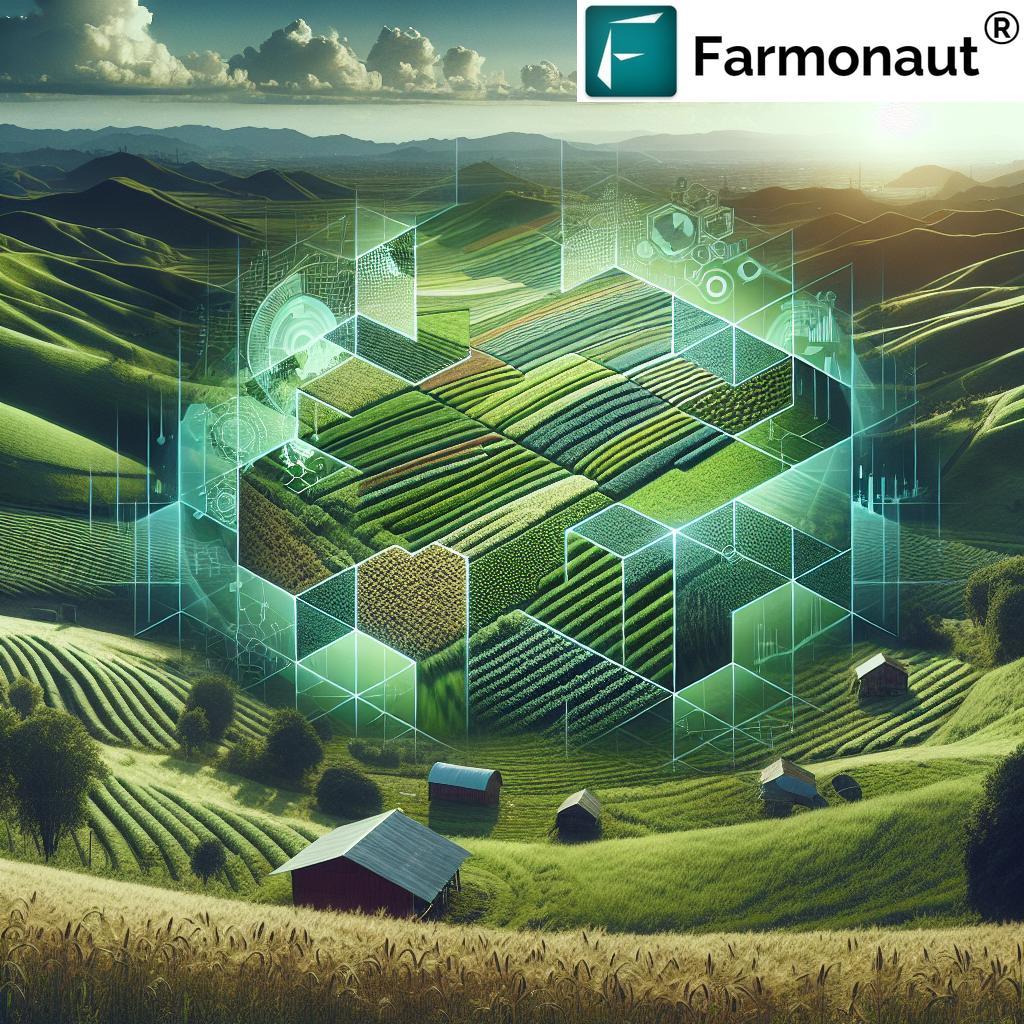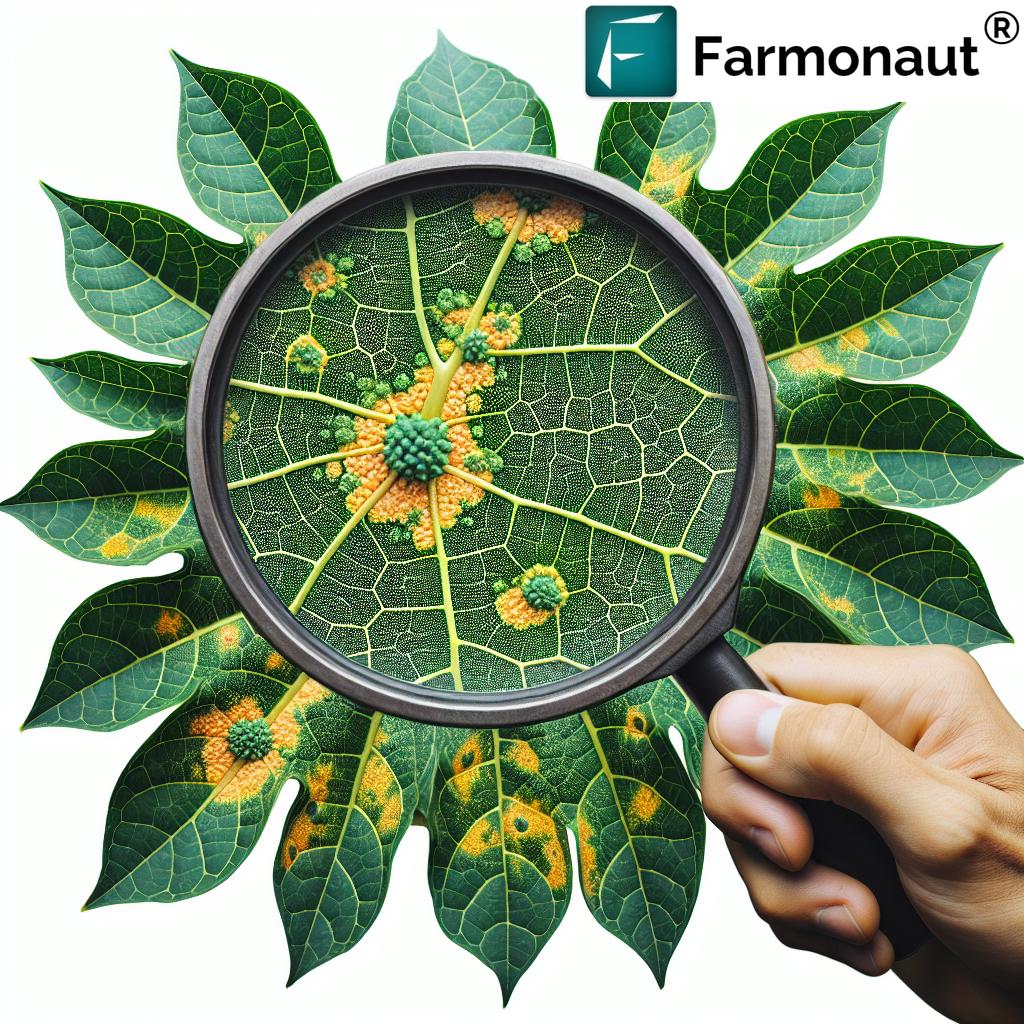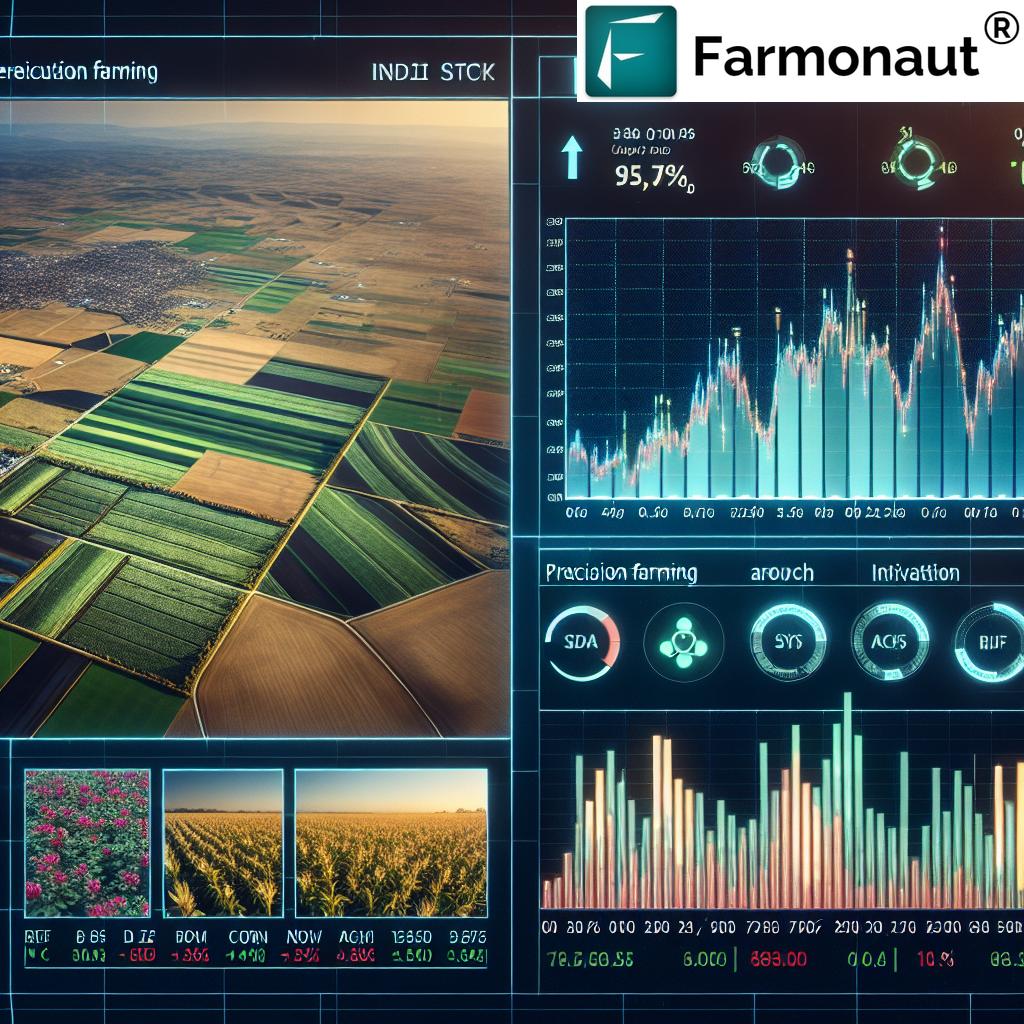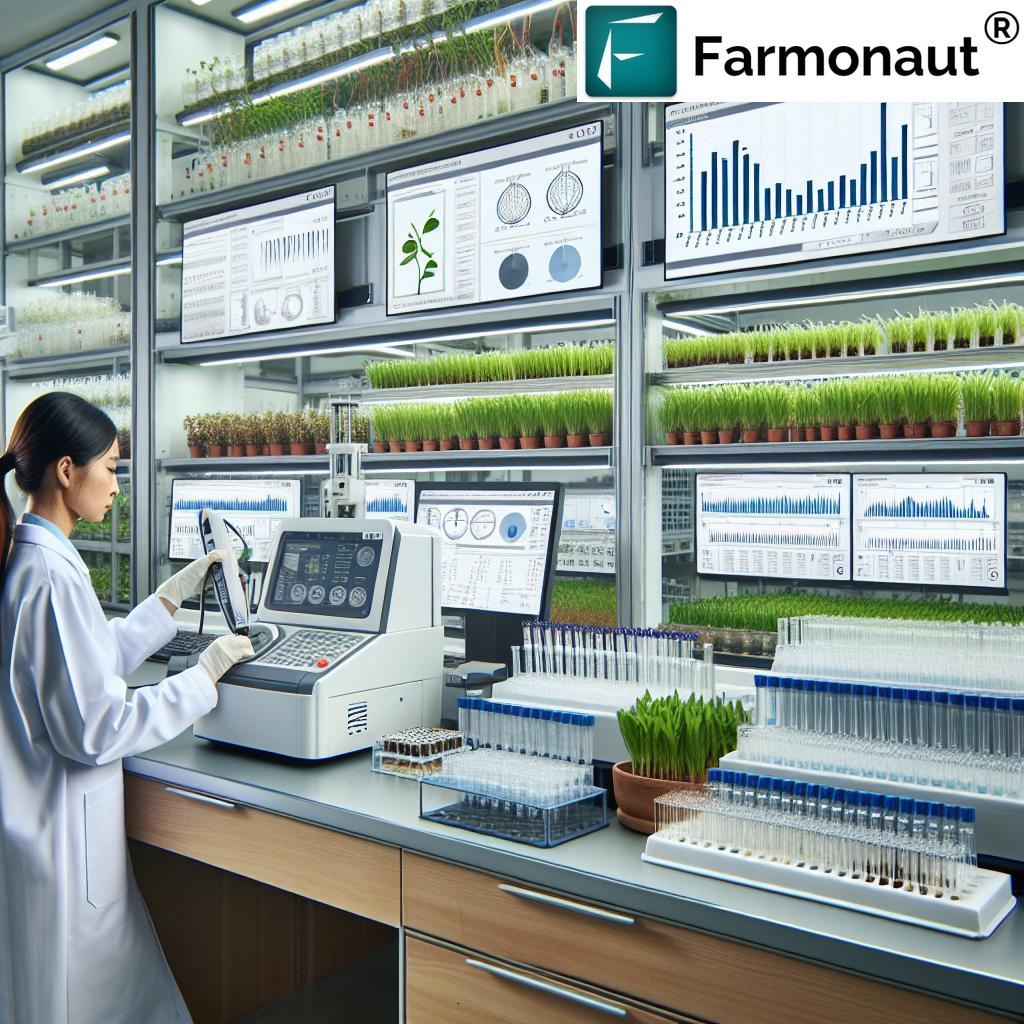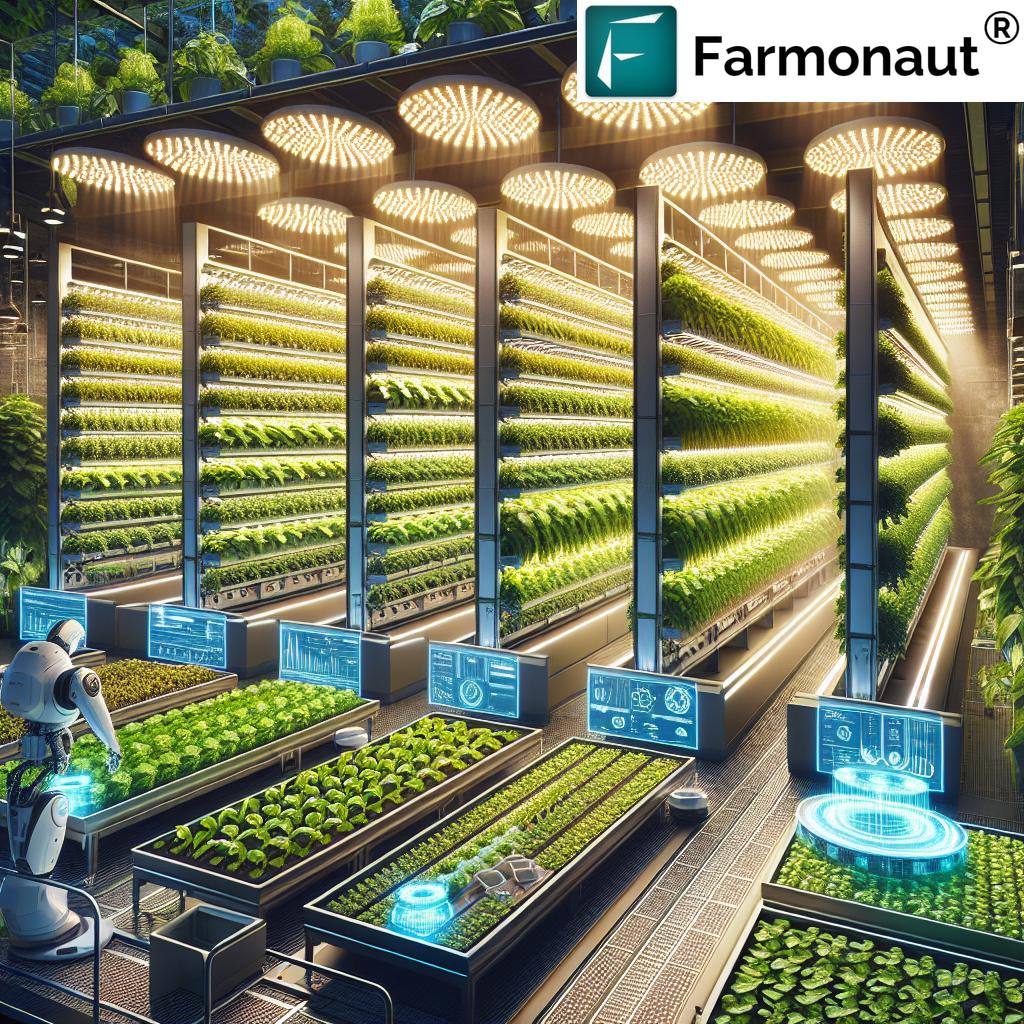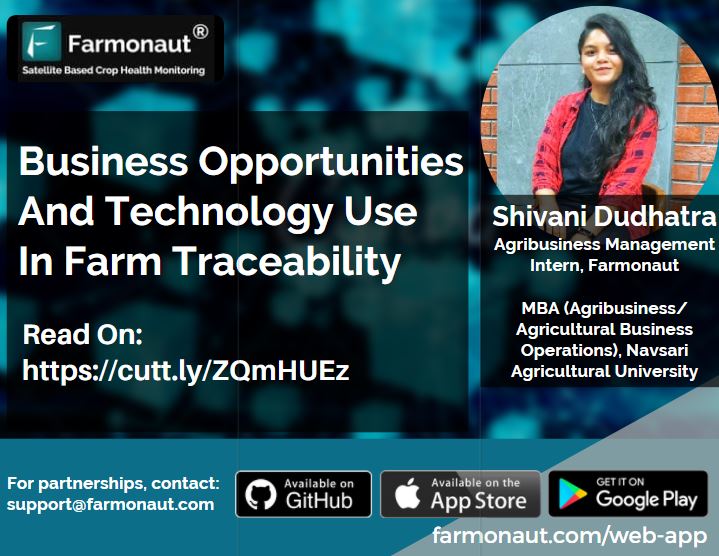Unlocking Growth: Innovative Food Distribution Strategies for Emerging Brands
“Distribution as a Service (DaaS) is one of three key approaches revolutionizing food distribution for emerging brands.”
In the ever-evolving landscape of the food industry, emerging brands face a critical challenge: how to get their products from production facilities to retail shelves efficiently and cost-effectively. The distribution dilemma is a crucial hurdle that can make or break a brand’s success. In this comprehensive guide, we’ll explore innovative food distribution strategies that are reshaping the industry and providing new opportunities for growth.
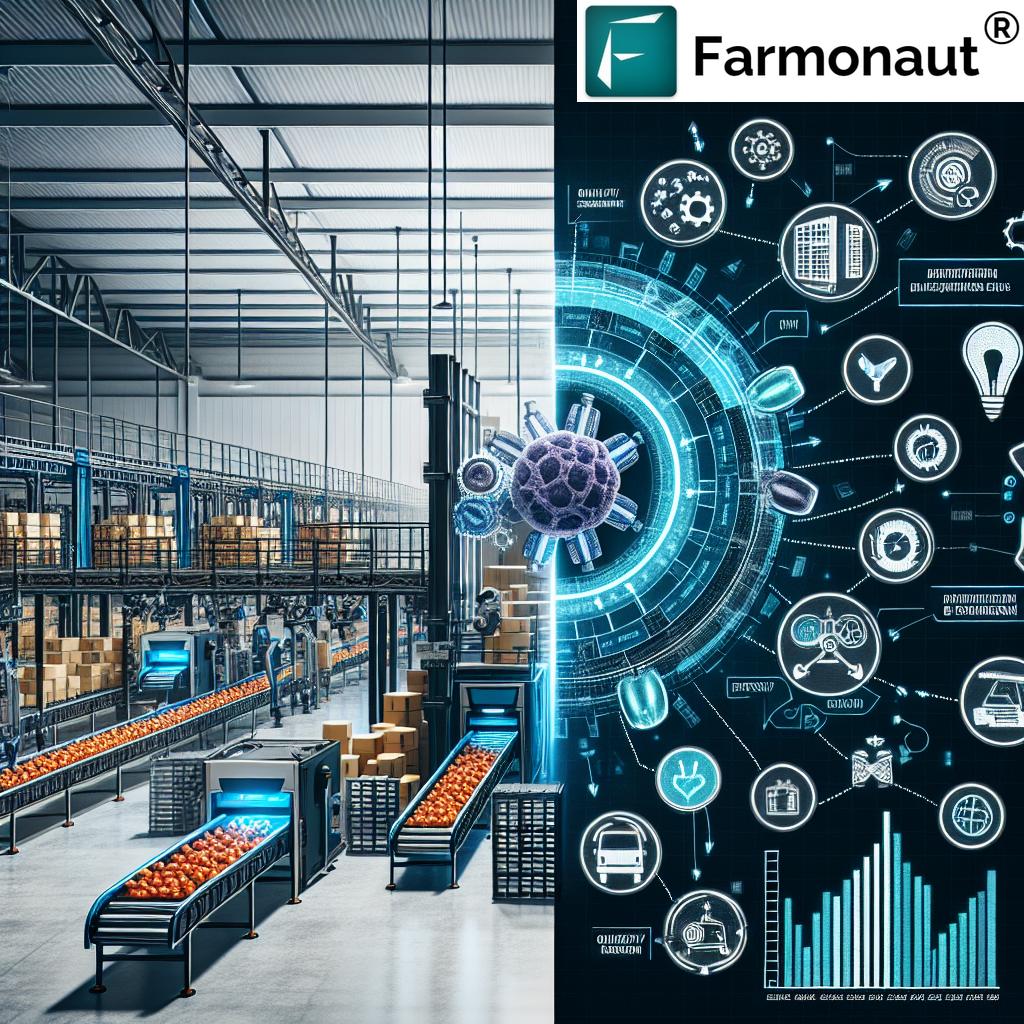
As we delve into the world of food distribution, it’s important to note that technology is playing an increasingly significant role in optimizing these processes. Companies like Farmonaut are leveraging advanced technologies such as satellite imagery and AI to revolutionize agricultural practices, which in turn impacts the entire food supply chain. While Farmonaut focuses on the production side, the principles of technology-driven optimization are equally applicable to distribution strategies.
The Distribution Dilemma – Exploring Options
Emerging food brands often find themselves at a crossroads when it comes to distribution. The choices they make can significantly impact their growth trajectory, market penetration, and ultimately, their bottom line. Let’s explore the three primary distribution strategies available to emerging food brands:
- Self-Distribution
- Conventional Distribution
- Distribution as a Service (DaaS)
Each of these strategies comes with its own set of advantages and challenges. By understanding the nuances of each approach, brands can make informed decisions that align with their goals and resources.
Self-Distribution: Taking Control of Your Destiny
Self-distribution is a strategy where brands manage their own logistics, delivering products directly to retailers or end consumers. This approach offers maximum control over the distribution process but requires significant investment in infrastructure and management.
Pros of Self-Distribution:
- Complete control over product handling and quality
- Direct relationships with retailers
- Flexibility in pricing and promotions
- Higher profit margins (no middleman fees)
Cons of Self-Distribution:
- High upfront costs for vehicles, warehousing, and staff
- Complex logistics management
- Limited geographic reach
- Time-consuming, potentially distracting from core business
Self-distribution can be an excellent option for brands that prioritize control and are willing to invest in building their own distribution network. It’s particularly suitable for local or regional brands with a concentrated customer base.
Conventional Distribution: Leveraging Established Networks
Conventional distribution involves partnering with established distributors who handle the logistics of getting products to retailers. This method taps into existing networks and expertise but may come at the cost of reduced control and margins.
Pros of Conventional Distribution:
- Access to established retail relationships
- Wider geographic reach
- Reduced logistics burden on the brand
- Potential for rapid scaling
Cons of Conventional Distribution:
- Lower profit margins due to distributor fees
- Less control over product placement and promotions
- Potential for products to get lost in large portfolios
- Limited direct contact with retailers
Conventional distribution can be an excellent choice for brands looking to expand rapidly and reach a broader market without the overhead of managing their own distribution network.
Distribution as a Service (DaaS): The Best of Both Worlds?
DaaS is an innovative approach that combines elements of self-distribution and conventional distribution. It utilizes technology platforms to connect brands with a network of independent distributors, offering flexibility and scalability.
Pros of DaaS:
- Flexibility to scale distribution as needed
- Lower upfront costs compared to self-distribution
- More control than conventional distribution
- Access to data and analytics for informed decision-making
Cons of DaaS:
- Reliance on third-party technology platforms
- Potential for inconsistent service quality across distributors
- May require more active management than conventional distribution
- Still an evolving model with potential growing pains
DaaS offers a compelling middle ground for brands that want more control than conventional distribution allows but aren’t ready for the full commitment of self-distribution.
While this video focuses on Farmonaut’s satellite technology in agriculture, it illustrates how technology can revolutionize traditional industries. Similarly, innovative distribution strategies are transforming how food brands reach consumers.
Technological Advancements Reshaping Food Distribution
The food distribution landscape is being dramatically transformed by technological advancements. These innovations are streamlining processes, reducing costs, and providing unprecedented insights into supply chain operations.
B2B Platforms and Wholesale Transaction Management
“B2B platforms in food distribution can significantly reduce costs, potentially saving brands thousands in transaction fees.”
B2B platforms are revolutionizing how food brands interact with distributors and retailers. These digital marketplaces facilitate seamless transactions, inventory management, and order tracking. By automating many aspects of the distribution process, these platforms can significantly reduce transaction costs and improve efficiency.
AI and Machine Learning in Distribution
Artificial Intelligence (AI) and Machine Learning (ML) are being leveraged to optimize routing, predict demand, and manage inventory more effectively. These technologies can help brands and distributors make data-driven decisions, reducing waste and improving overall efficiency in the distribution cycle.
Blockchain for Traceability and Food Safety
Blockchain technology is enhancing traceability in the food supply chain, a critical factor for both safety and consumer trust. By providing an immutable record of a product’s journey from farm to shelf, blockchain can help brands ensure quality control and respond quickly to any safety issues.
While Farmonaut’s focus is on the agricultural side, their use of blockchain for traceability in farming practices demonstrates how this technology can be applied throughout the food supply chain, including distribution.

The Challenge of Securing Retail Shelf Space
One of the most significant hurdles for emerging food brands is securing prime retail shelf space. This challenge is exacerbated by the limited space available and the fierce competition from established brands.
Strategies for Shelf Space Success:
- Data-Driven Pitches: Use market data and consumer insights to make compelling cases to retailers.
- Innovative Packaging: Stand out on the shelf with unique, eye-catching packaging designs.
- Strategic Pricing: Offer competitive pricing structures that benefit both the brand and the retailer.
- In-Store Promotions: Leverage in-store marketing tactics to draw attention to your products.
Securing shelf space is not just about getting your product in stores; it’s about maintaining that space through consistent sales performance and strong relationships with retailers.
The Importance of Strategic Marketing in Food Distribution
While distribution is crucial, it’s only part of the equation. Strategic marketing plays a vital role in driving demand and ensuring your products move off the shelves once they’re in stores.
Key Marketing Strategies for Emerging Food Brands:
- Social Media Engagement: Build a community around your brand through platforms like Instagram and TikTok.
- Influencer Partnerships: Collaborate with food bloggers and social media influencers to reach new audiences.
- Content Marketing: Create valuable content that educates and engages your target market.
- Sampling Programs: Offer product samples to encourage trial and build brand awareness.
Effective marketing can create pull-through demand, making your brand more attractive to retailers and distributors alike.
This video showcases Farmonaut’s precision crop area estimation technology. While focused on agriculture, it demonstrates how data-driven insights can optimize operations – a principle equally applicable to food distribution strategies.
Distribution Cost Analysis: Balancing Efficiency and Quality
Understanding and managing distribution costs is critical for emerging food brands. A thorough cost analysis can help brands make informed decisions about their distribution strategy and pricing.
Key Factors in Distribution Cost Analysis:
- Transportation Costs: Fuel, vehicle maintenance, and driver wages.
- Warehousing Expenses: Storage fees, inventory management, and handling costs.
- Technology Investments: Software for order management, route optimization, and inventory tracking.
- Labor Costs: Salaries for logistics managers, warehouse staff, and customer service representatives.
By carefully analyzing these costs, brands can identify areas for optimization and make strategic decisions about their distribution approach.
Direct-to-Retailer Relationships: Cutting Out the Middleman
For some emerging brands, developing direct relationships with retailers can be a game-changing strategy. This approach allows for greater control over product placement and pricing, but it also comes with increased responsibilities.
Advantages of Direct-to-Retailer Relationships:
- Higher profit margins by eliminating distributor fees
- More control over product presentation and promotions
- Direct feedback from retailers for product improvements
- Opportunity to build stronger brand loyalty with retailers
Challenges of Direct-to-Retailer Relationships:
- Increased logistical complexity
- Need for robust order management systems
- Higher customer service demands
- Potential for inventory management issues
Brands considering this approach should carefully weigh the benefits against the additional responsibilities and ensure they have the infrastructure to support direct-to-retailer distribution.
Leveraging B2B Platforms for Cost Savings
B2B platforms are emerging as powerful tools for food brands to streamline their distribution processes and reduce costs. These platforms can offer significant advantages, particularly for emerging brands looking to scale efficiently.
Benefits of B2B Platforms in Food Distribution:
- Reduced Transaction Costs: Automated ordering and invoicing processes can significantly cut administrative expenses.
- Improved Visibility: Real-time tracking of orders and inventory levels across the supply chain.
- Access to a Wider Network: Connect with a broader range of retailers and distributors.
- Data-Driven Insights: Analytics tools to help optimize pricing, inventory, and marketing strategies.
By leveraging these platforms, emerging brands can compete more effectively with larger, established players in the market.
This video demonstrates Farmonaut’s web app for satellite-based crop monitoring. While focused on agriculture, it illustrates how digital platforms can provide valuable insights and efficiency – principles that are equally applicable to food distribution strategies.
The Future of Food Distribution: Trends to Watch
As we look to the future, several trends are shaping the landscape of food distribution. Emerging brands should be aware of these developments to stay competitive and capitalize on new opportunities.
Key Trends in Food Distribution:
- Sustainability Focus: Increasing demand for eco-friendly packaging and distribution methods.
- Direct-to-Consumer (D2C) Models: Growth in brands bypassing traditional retail channels.
- Hyper-Local Distribution: Emphasis on sourcing and distributing products within local communities.
- AI-Driven Demand Forecasting: More accurate prediction of consumer demand to optimize inventory and reduce waste.
- Blockchain for Transparency: Increased use of blockchain technology for supply chain transparency and food safety.
Staying ahead of these trends can help emerging brands position themselves for long-term success in the evolving food industry landscape.
Case Study: Success Through Strategic Distribution
While we can’t provide specific case studies about Farmonaut, we can examine a hypothetical scenario that illustrates the impact of strategic distribution choices on an emerging food brand’s success.
Consider “Green Eats,” a fictional plant-based snack company. Initially, Green Eats struggled with limited retail presence and high distribution costs. By adopting a hybrid approach combining DaaS for broader reach and direct-to-retailer relationships in key markets, Green Eats was able to:
- Reduce overall distribution costs by 30%
- Increase retail presence from 500 to 2000 stores in 18 months
- Improve profit margins by 15% through optimized pricing and reduced middleman fees
- Enhance brand visibility and consumer engagement through targeted in-store promotions
This example demonstrates how a strategic approach to distribution can significantly impact a brand’s growth trajectory.
Comparison of Food Distribution Strategies
| Distribution Strategy | Pros | Cons | Best Suited For |
|---|---|---|---|
| Self-Distribution |
• Complete control • Higher profit margins • Direct retailer relationships • Flexibility in operations |
• High upfront costs • Complex logistics • Limited geographic reach • Time-consuming management |
Local or regional brands with concentrated customer base and sufficient capital |
| Conventional Distribution |
• Wide geographic reach • Established retail relationships • Reduced logistics burden • Potential for rapid scaling |
• Lower profit margins • Less control over placement • Products may get lost in large portfolios • Limited direct retailer contact |
Brands looking to expand rapidly without managing their own distribution network |
| Distribution as a Service (DaaS) |
• Flexibility to scale • Lower upfront costs • More control than conventional • Access to data and analytics |
• Reliance on third-party platforms • Potential inconsistent service quality • May require active management • Evolving model with potential challenges |
Emerging brands seeking balance between control and scalability without full distribution infrastructure |
Implementing Your Chosen Distribution Strategy
Once you’ve decided on a distribution strategy, successful implementation is key. Here are some steps to consider:
- Assess Your Resources: Evaluate your financial, human, and technological resources to ensure they align with your chosen strategy.
- Develop a Detailed Plan: Create a comprehensive implementation plan with clear milestones and KPIs.
- Build Relationships: Whether with distributors, retailers, or technology partners, strong relationships are crucial for success.
- Invest in Technology: Utilize appropriate software and tools to manage your distribution effectively.
- Train Your Team: Ensure your staff is well-equipped to handle the demands of your distribution strategy.
- Monitor and Adjust: Regularly review your performance and be prepared to make adjustments as needed.
Remember, the right distribution strategy can be a powerful driver of growth for your emerging food brand.
This video introduces Farmonaut’s large-scale usage for businesses and governments. While focused on agricultural applications, it demonstrates how technology can be scaled to manage complex operations – a principle that’s equally relevant in food distribution strategies.
Conclusion: Charting Your Path to Distribution Success
As we’ve explored throughout this comprehensive guide, the world of food distribution is complex and ever-evolving. For emerging brands, choosing the right distribution strategy is a critical decision that can significantly impact growth, market penetration, and overall success.
Whether you opt for self-distribution, conventional distribution, or the innovative Distribution as a Service model, the key is to align your choice with your brand’s unique goals, resources, and target market. Remember that technology is playing an increasingly important role in optimizing distribution processes, from B2B platforms that streamline transactions to AI-driven demand forecasting tools.
As you navigate the challenges of securing retail shelf space and managing distribution costs, keep in mind the importance of strategic marketing and building strong relationships with retailers and consumers alike. Stay attuned to emerging trends in the industry, such as the growing focus on sustainability and the rise of direct-to-consumer models.
By carefully considering your options, leveraging available technologies, and remaining adaptable in the face of industry changes, your emerging food brand can unlock new growth opportunities and thrive in the competitive food industry landscape.
FAQ Section
Q: What is the best distribution strategy for a new food brand?
A: The best strategy depends on your brand’s specific needs, resources, and goals. Self-distribution offers more control but requires significant investment, conventional distribution provides wide reach but less control, while DaaS offers a middle ground. Assess your situation carefully to determine the best fit.
Q: How can technology improve food distribution?
A: Technology can streamline processes, reduce costs, and provide valuable insights. B2B platforms can automate transactions, AI can optimize routing and inventory management, and blockchain can enhance traceability and food safety.
Q: What are the main challenges in securing retail shelf space?
A: Key challenges include competition from established brands, limited available space, and the need to prove product viability. Overcoming these often requires a combination of compelling data, innovative packaging, strategic pricing, and effective in-store promotions.
Q: How important is marketing in food distribution?
A: Marketing is crucial in driving demand for your products. Effective marketing strategies can create pull-through demand, making your brand more attractive to retailers and distributors, and helping to secure and maintain shelf space.
Q: What future trends should emerging food brands be aware of in distribution?
A: Key trends include a growing focus on sustainability, the rise of direct-to-consumer models, increased use of AI for demand forecasting, and the application of blockchain for supply chain transparency.
Explore Farmonaut’s Solutions
While Farmonaut specializes in agricultural technology rather than food distribution, their innovative approach to optimizing farming practices can offer valuable insights for food brands looking to innovate in their own sector. Explore Farmonaut’s solutions to see how technology is revolutionizing the early stages of the food supply chain:

Farmonaut Mobile Apps:


Farmonaut Subscriptions
By leveraging innovative technologies and strategies, emerging food brands can navigate the complex world of distribution and unlock new opportunities for growth. Whether you’re just starting out or looking to scale your existing operations, the right approach to distribution can make all the difference in your brand’s success story.


